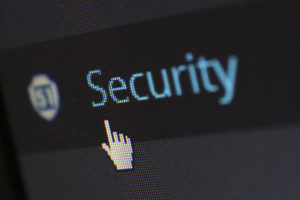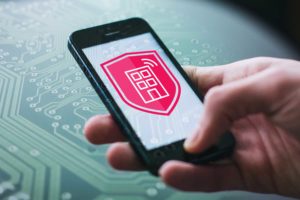How COVID-19 Made Security Systems Planning Essential Part Business Continuity Planning New York
 One thing the shutdown during the Coronavirus pandemic in NY certainly has done is interrupted many businesses and made Owners question how well they have planned to ensure business continuity in all aspects of their business.
One thing the shutdown during the Coronavirus pandemic in NY certainly has done is interrupted many businesses and made Owners question how well they have planned to ensure business continuity in all aspects of their business.
COVID-19 has exposed vulnerabilities in both processes and systems, including security systems, and the lack thereof when a business moves from onsite work to remote and offsite work. It has also created the need for new standard operating procedures to be developed and managed remotely. And when a business has moved offsite or even temporarily shut down, in many cases, it has left its facility vulnerable to security breaches both physical and digital in nature. Despite the temporary lockdown, every piece of property must be secured.
Therefore, part of any Business Continuity Planning is security planning for your business and risk management. First, let’s understand Business Continuity from a higher level:
What is Business Continuity Planning (BCP)?
A Business Continuity Plan or BCP is the process involved in outlining procedures on how a business will continue to operate during an unprecedented event. Having a prevention and recovery plan ensures a company has the capacity to run its critical business operations during emergency situations. Emergencies can include pandemics, business crises, workplace violence, natural disasters and other events that can disrupt business operations.
Important Factors To Consider When Creating A Security System Business Continuity Plan
- Safety of Employees and Customers. Thermal Temperature Screening is fast becoming the preferred method of screening staff and patrons entering your facility. While not a perfect solution, these systems show everyone that you take this situation seriously and are taking steps to ensure their safety.
- Security of the Company’s Premises. It is said that idle hands are the devil’s workshop. Vandalism has increased during this time and no doubt will continue to be a major concern going forward. A professionally installed burglar alarm system coupled with high definition cameras go a long way in protecting your building, and your peace of mind.
- Company/Team Communications. New technology such as Zoom video conferencing and Microsoft Teams have enabled staff to continue working as one group, even when they are all stationed remotely.
- Alternative Work Locations. Many businesses have relocated staff to satellite offices. When doing so they may find that their Access Control (keyfob system) just isn’t up to the task. A properly designed modern Electronic Access Control (EAC) system will allow you to bring new locations online quickly while managing them all from a single user interface.
- Customized Security Services. Everyone’s security needs are unique. Our team of Security Consultants will help you tailor a customized solution that fits your needs and your budget.
- Security Resource Planning. Using Digital Wellness Planning we can help you apply your current security infrastructure to enforce your new health and safety policies.
- Security Assessment to Prevent and/or Minimize Disruption. We have always offered a free onsite security assessment of your school or business and have now added new guidelines which have been outlined by the CDC and FDA during the pandemic. We will provide you with a report that outlines your current situation and offers valuable information and guidance on how to improve your overall security.
- Damage Assessment and Recovery Team. Should you suffer damage to your premises, we can work closely with your architect to get you headed in the right direction in regard to your security and low voltage needs.
Why Business Continuity Planning Matters
Because continuity means consistency. Consistency impacts more than just Operations and profitability; it impacts market perception and ultimately trust in your brand, an invaluable intangible that then impacts the value of your business.
The Business Continuity Planning Process As It Relates to Security System Planning & Integration
The four stages of a business continuity plan in regard to your security systems are typically:
1) Business Impact Analysis: We will work with your team to gather all of the information needed to complete our security assessment.
2) Recovery Strategies: We will identify weak points in your security infrastructure and offer solutions to offer better redundancy and operation.
3) Plan Development: We will develop a plan that offers solutions to your current security infrastructure concerns. We will also educate you on the latest technology which may help you better handle an emergency situation.
4) Testing and Exercises: Once improvements have been made, we will conduct field exercises to test the new system capabilities and properly train your staff on what to do when things start to happen.
Security System Products That Reinforce Your Business Continuity Plan: A Closer Look
 Looking at business continuity from just a security systems point of view, there is a lot that can be done to help a business maintain superior security levels while decentralizing its operations for example. Business continuity programs should therefore include all of the necessary systems to maintain and improve your business security too. Here are five things Digital Provisions recommends to significantly improve your business continuity program (BCP) as it related to New York Business Security:
Looking at business continuity from just a security systems point of view, there is a lot that can be done to help a business maintain superior security levels while decentralizing its operations for example. Business continuity programs should therefore include all of the necessary systems to maintain and improve your business security too. Here are five things Digital Provisions recommends to significantly improve your business continuity program (BCP) as it related to New York Business Security:
Remote Security System Access – Both your video surveillance system as well as your intrusion (burglary alarm) and EAC systems should be accessible remotely. Additionally, each should be sending you real time updates about certain conditions that you have outlined as requiring your notification. Lastly, a second backup internet service provider (ISP) is an excellent way to provide redundancy into your organization while you are not there.
Intruder Alarm Systems – A properly functioning intrusion alarm system must be monitored by Central Station operators to be truly effective. We sometimes have customers choose to self-monitor and later regret it when they miss that critical call either due to bad reception or being out of pocket. Central Station is always going to respond and they can be instructed to call the authorities if they are unable to reach the designated contact at your organization.
Backup Power Supplies – Every component of your security systems must be connected to some form of backup power supply. A UPS will ensure your system is unaffected by power spikes or short power outages. For further protection a backup generator system is recommended.
Video Surveillance Floorplans – Your video surveillance system must be capable of displaying your cameras on a floorplan of your facility. This will help staff and possibly first responders better deal with emergency situations.
EAC Threat Levels – Your Electronic Access Control system should have the ability to apply predetermined security templates in relation to the security challenge at hand. What is a threat level? Think of it as a way to set specific security measures in motion whenever there may be a problem. By pre-defining your actions, you can instantly place your building into lockdown or take other actions, all automatically.
Additional Reasons Why A Future with A More Decentralized Office Structure Will Impact Digital & Physical Security Planning in the Long Term
 We may never go back to exactly how things were before COVID-19. I think many of us know that to heart. That’s because any challenge, any tough situation, often has a silver lining where new ideas and new solutions are generated. Solutions that can fundamentally change how we operate as businesses. When those solutions improve profits or drive incremental revenue or new profits centers are created, the financial impact alone can be enough to prompt permanent change. One example is curbside pick-up for retailers and food. Is there a reason to not offer this into the future? Coupled with financials is the fact that many of these shifts were already in play around the Globe. For example:
We may never go back to exactly how things were before COVID-19. I think many of us know that to heart. That’s because any challenge, any tough situation, often has a silver lining where new ideas and new solutions are generated. Solutions that can fundamentally change how we operate as businesses. When those solutions improve profits or drive incremental revenue or new profits centers are created, the financial impact alone can be enough to prompt permanent change. One example is curbside pick-up for retailers and food. Is there a reason to not offer this into the future? Coupled with financials is the fact that many of these shifts were already in play around the Globe. For example:
Remote work was already a trend. Data security will be more important than ever. With a trend toward remote work and at-home work already in process well before COVID-19, the current situation has been a catalyst to even more at-home work and potentially permanent restructuring of many business’ infrastructure and workforce. Combine that with an increasingly international and global world and the vast improvements in technology and communication, many questions where in person work is the most optimal system to begin with. Needing to keep your business and information secure in this new environment is critical.
Working with less overhead means leaner and more profitable operations. However, businesses will still keep their buildings for a more “hybrid” approach to scheduling home/at office work. As many companies will learn, to work smarter and “leaner” in terms of personnel and organizational design, the COVID-19 at home workforce may in fact stay at home into the future if it proves to be beneficial for business profits and is acceptable and desired by the work force. However, they will still need to be able to manage security offsite and onsite with equal ease of control, including from mobile devices and 24/7. Remote access control will be increasingly more important, we suspect. Perimeter control will continue to be essential, because it is your first line of defense. All of these systems need to be integrated and also kept up to date, all the time.
Employee scanning will be important on site. Whereas IP cameras were used primarily for security, they will increase function and scan for elevated temperatures and potential health issues. This is part of ensuring a healthy work environment and will continue to be important to future of security. Keeping people out will be balanced with ensuring the health of those you let in; security systems will help this process immensely.
Summary
Has COVID-19 changed the New York business landscape forever? When we look back, will we say it actually has helped us manage our businesses better? COVID-19’s silver lining is that has exposed weakness we can now correct. What does this mean for you the New York business owner? Never before has business continuity planning been so important to keep workers safe and secure, ensure smooth operations, build contingency plans that reduce risk, and make businesses less vulnerable overall to the changes that are inevitably happening in society from COVID-19. Security systems play a large role in ensuring you are reducing risk.
Contact Digital Provisions to Plan A Security Business Continuity Program for Your Business
Plan to put your business in a better more secure position. When you think about BCP going forward, also think about your security continuity. A little planning will go a very long way.
Contact Digital Provisions today at 631-209-2600 for a security consultation.
Additional Resources:
Here is a resource with both a system to self-assess your risk levels but also six steps to create your own business continuity plan: https://www.ilo.org/wcmsp5/groups/public/—ed_dialogue/—act_emp/documents/publication/wcms_740375.pdf.
